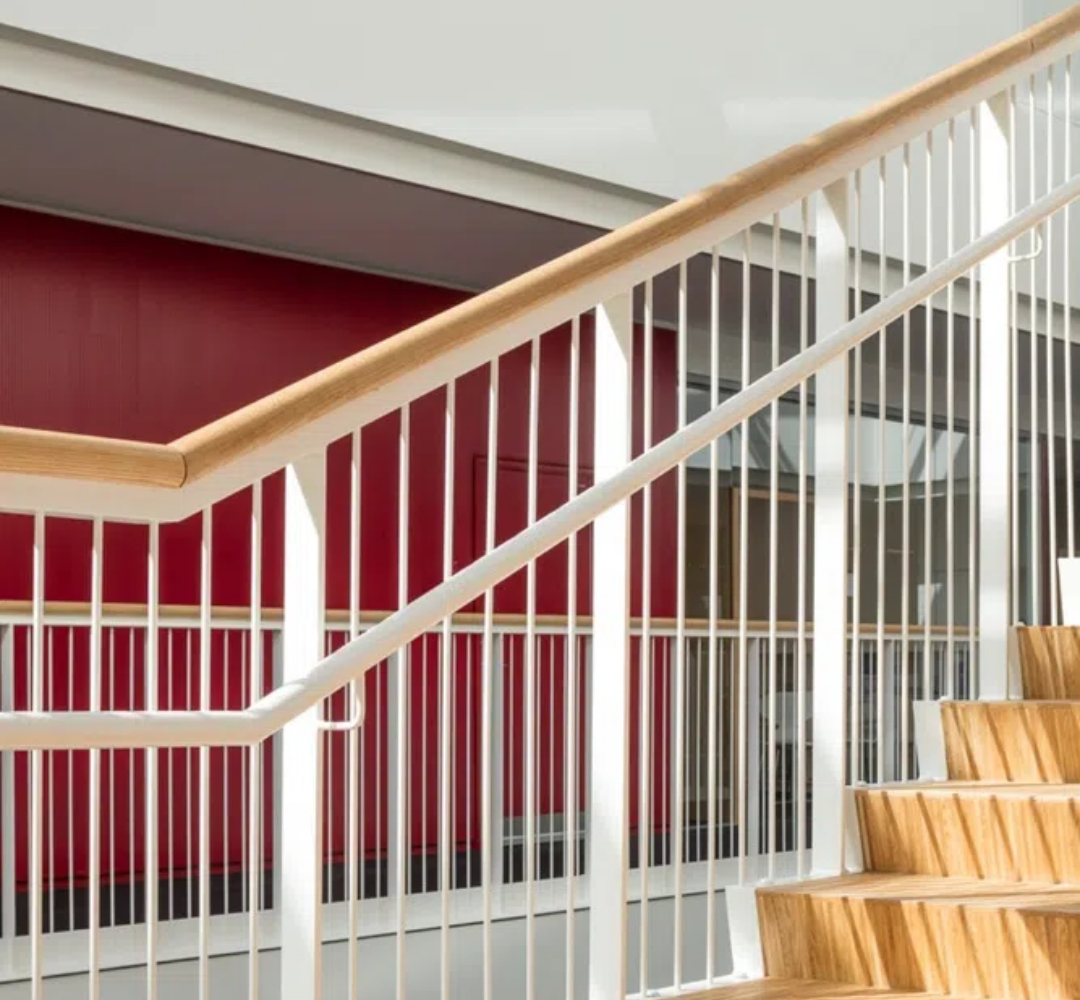Aging in Place: How to Design Metal Railings for Senior Safety and Independence
Introduction
As the global population continues to age, the concept of "aging in place" has gained significant traction. This philosophy centers on enabling seniors to live independently and safely within their own homes for as long as possible, rather than relocating to assisted living facilities or nursing homes. A critical component of creating a safe home environment for the elderly is the thoughtful design of metal railings. These seemingly simple structures play a pivotal role in preventing falls, enhancing mobility, and promoting overall independence. This comprehensive guide delves into the key design elements of elderly-friendly metal railings, supported by research, case studies, and expert recommendations.
Height and Positioning: The First Line of Defense Against Falls
Critical Measurements for Optimal Safety
The height of metal railings is a fundamental design consideration that directly impacts fall prevention. According to the Americans with Disabilities Act (ADA) guidelines, the optimal railing height should fall within the range of 34 to 38 inches (86 to 96.5 centimeters). This measurement strikes a balance between being easily accessible for seniors with varying heights and providing sufficient support to prevent falls. Railings that are too low may fail to offer adequate support during standing or walking, while railings that are too high can be difficult to grasp, especially for individuals with limited reach or mobility issues.
In addition to vertical height, the horizontal placement of railings is equally crucial. For staircases, a double railing system—comprising both horizontal and vertical components—has proven to be highly effective in aiding balance. The horizontal railing provides support along the length of the staircase, allowing seniors to maintain continuous contact while ascending or descending. The vertical railing, positioned at regular intervals, offers additional stability and a point of reference, helping to prevent disorientation and falls. Research indicates that such dual systems can reduce the risk of falls by up to 30% compared to single railing installations.

Strategic Placement for Maximum Effectiveness
The placement of railings extends beyond mere height and orientation. Railings should be installed on both sides of stairways and ramps to provide symmetrical support and accommodate different walking patterns. Seniors often have varying degrees of strength and balance on each side of their body, and having railings on both sides allows them to choose the side that offers the most comfort and security. Furthermore, the continuity of railings is paramount. Gaps longer than 4 inches (10 centimeters) should be avoided, as they can create hazardous points where seniors might lose their grip or become disoriented. A retrofit project in a Chicago home exemplifies the impact of strategic placement. After installing dual railings on both sides of the staircase with no gaps exceeding 4 inches, the home saw a remarkable 60% reduction in fall risks among its elderly residents.
Ergonomic Grips and Texture: Enhancing Comfort and Control
Diameter and Shape for Arthritic Hands
The design of the railing's grip is another critical factor, particularly for seniors with arthritis or other hand conditions that affect dexterity and strength. Circular grips with a diameter ranging from 1.25 to 1.5 inches (3.2 to 3.8 centimeters) are recommended, as they offer a comfortable and secure grip without requiring excessive hand strength. The addition of knurled textures on these grips further enhances traction, reducing the likelihood of slippage even when hands are moist or trembling. For wall-mounted rails, oval or flattened profiles are often more suitable, as they maximize palm contact and distribute pressure more evenly across the hand. This design consideration is especially beneficial for seniors who may need to lean on the rail for support while standing or transferring from a seated position.

Anti-Slip Coatings for Added Security
Various anti-slip coatings are available to enhance the safety of metal railings. Thermoplastic rubber (TPR) sleeves have gained popularity due to their durability and effectiveness in providing a secure grip. These sleeves conform to the shape of the railing and create a textured surface that resists slipping, even when wet. Alternatively, powder-coated grooves offer a cost-effective solution that also improves traction. The SafeGrip Pro Series, a product line specifically designed for senior-friendly environments, incorporates a moisture-wicking texture that not only prevents slippage but also helps to keep hands dry by drawing away perspiration. This innovative design addresses a common issue faced by seniors, as damp hands can significantly reduce grip strength and increase the risk of accidents.
Visibility and Contrast: Navigating with Confidence
Color Psychology for Low-Vision Seniors
The visual aspects of metal railings should not be underestimated, particularly for seniors with low vision or cognitive impairments. High-contrast color combinations, such as yellow railings against dark walls or white railings against red walls, can significantly improve visibility. These color pairings leverage the principles of color psychology, where certain combinations are known to enhance perception and recognition. For seniors with macular degeneration or other vision impairments, such contrast can make the difference between easily locating the railing and struggling to find it in an emergency. Studies have shown that homes with high-contrast railings experience fewer nighttime falls, as seniors can quickly identify and grasp the railing when moving to the bathroom or kitchen during the night.
Illumination Solutions for Nighttime Navigation
Beyond color, illumination plays a vital role in enhancing visibility. Glow-in-the-dark strips can be embedded into railings, providing a subtle but effective light source that lasts for several hours after exposure to light. This feature is particularly useful in areas where nighttime lighting is limited or where seniors may be reluctant to turn on bright lights due to disorientation. LED-embedded strips offer a more advanced solution, providing a consistent and adjustable light source. These LEDs can be programmed to activate automatically during nighttime hours or when motion is detected, ensuring that the railing is always visible without requiring seniors to fumble for light switches. The choice between brushed stainless steel and matte finishes also impacts glare reduction. Brushed stainless steel offers a balance between visibility and minimal glare, making it a popular choice for environments where both aesthetics and functionality are important.
Load-Bearing Capacity: Ensuring Structural Integrity
Engineering Standards for Safety
The structural integrity of metal railings is non-negotiable, especially when supporting the weight of seniors who may lean heavily on them for balance or during transfers. Engineering standards dictate that railings must support a minimum vertical load of 250 pounds (113 kilograms), as specified by the International Building Code (IBC) 2018. This load capacity ensures that the railing can withstand the force exerted by a senior's body weight in various scenarios, including sudden movements or falls. For homes accommodating wheelchair users, reinforced brackets are essential, as these individuals may exert additional force when leaning on the railing to stabilize themselves or transfer from their wheelchair to a seated position. The SteelGuard ElderCare Rails series exemplifies robust engineering, with load capacities exceeding 400 pounds, providing an added margin of safety for heavier individuals or in situations where multiple people may simultaneously grasp the railing.
Material Testing and Quality Assurance
The materials used in railing construction must undergo rigorous testing to ensure they meet or exceed established safety standards. This includes evaluating the tensile strength of the metal, the durability of coatings, and the resistance to corrosion and wear. Quality assurance processes should involve third-party testing to eliminate bias and ensure that products perform as advertised. Homeowners and caregivers should seek certifications from recognized organizations, such as the American Society for Testing and Materials (ASTM) or the National Association of Home Builders (NAHB), when selecting metal railings for senior-friendly environments.
Emergency Scenarios: Designing for the Unexpected
Integration with Alert Systems
Metal railings can also be integrated with emergency alert systems to provide an added layer of security. Pressure-sensitive rails are equipped with sensors that detect when excessive force is applied, such as during a fall. These sensors can trigger wearable emergency alerts, notifying caregivers, family members, or emergency services immediately. This rapid response capability can be lifesaving, especially for seniors who live alone or have limited mobility. The integration of technology into traditional safety features represents a forward-thinking approach to elderly care, leveraging advancements to enhance both safety and independence.
Conclusion
Designing metal railings for senior safety and independence requires a multifaceted approach that considers height, grip design, visibility, load capacity, and emergency preparedness. By adhering to established guidelines, incorporating innovative materials and technologies, and prioritizing user comfort and accessibility, caregivers, architects, and homeowners can create environments where seniors can age in place with dignity and security. As our understanding of elderly needs continues to evolve, so too will the design of these essential safety features, ensuring that they remain effective and responsive to the changing landscape of senior care.
